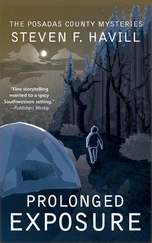Steven Dubner - Freakonomics
Здесь есть возможность читать онлайн «Steven Dubner - Freakonomics» весь текст электронной книги совершенно бесплатно (целиком полную версию без сокращений). В некоторых случаях можно слушать аудио, скачать через торрент в формате fb2 и присутствует краткое содержание. Жанр: Старинная литература, на русском языке. Описание произведения, (предисловие) а так же отзывы посетителей доступны на портале библиотеки ЛибКат.
- Название:Freakonomics
- Автор:
- Жанр:
- Год:неизвестен
- ISBN:нет данных
- Рейтинг книги:3 / 5. Голосов: 1
-
Избранное:Добавить в избранное
- Отзывы:
-
Ваша оценка:
- 60
- 1
- 2
- 3
- 4
- 5
Freakonomics: краткое содержание, описание и аннотация
Предлагаем к чтению аннотацию, описание, краткое содержание или предисловие (зависит от того, что написал сам автор книги «Freakonomics»). Если вы не нашли необходимую информацию о книге — напишите в комментариях, мы постараемся отыскать её.
Freakonomics — читать онлайн бесплатно полную книгу (весь текст) целиком
Ниже представлен текст книги, разбитый по страницам. Система сохранения места последней прочитанной страницы, позволяет с удобством читать онлайн бесплатно книгу «Freakonomics», без необходимости каждый раз заново искать на чём Вы остановились. Поставьте закладку, и сможете в любой момент перейти на страницу, на которой закончили чтение.
Интервал:
Закладка:
What interested Levitt were the stuff and riddles of everyday life. His investigations were a feast for anyone wanting to know how the world really works. His singular attitude was evoked in Dubner’s resulting article: As Levitt sees it, economics is a science with excellent tools for gaining answers but a serious shortage of interesting questions. His particular gift is the ability to ask such questions. For instance: If drug dealers make so much money, why do they still live with their mothers? Which is more dangerous, a gun or a swimming pool? What really caused crime rates to plunge during the past decade? Do real-estate agents have their clients’ best interests at heart? Why do black parents give their children names that may hurt their career prospects? Do schoolteachers cheat to meet high-stakes testing standards? Is sumo wrestling corrupt?
And how does a homeless man in tattered clothing afford $50 headphones?
Many people—including a fair number of his peers—might not recognize Levitt’s work as economics at all. But he has merely distilled the so-called dismal science to its most primal aim: explaining how people get what they want.
Unlike most academics, he is unafraid of using personal observations and curiosities; he is also unafraid of anecdote and storytelling (but he is afraid of calculus). He is an intuitionist. He sifts through a pile of data to find a story that no one else has found. He figures a way to measure an effect that veteran economists had declared unmeasurable. His abiding interests—though he says he has never trafficked in them himself—are cheating, corruption, and crime.
Levitt’s blazing curiosity also proved attractive to thousands of New York Times readers. He was beset by questions and queries, riddles and requests—from General Motors and the New York Yankees and U.S. senators but also from prisoners and parents and a man who for twenty years had kept precise data on his sales of bagels. A former Tour de France champion called Levitt to ask his help in proving that the current Tour is rife with doping; the Central Intelligence Agency wanted to know how Levitt might use data to catch money launderers and terrorists.
What they were all responding to was the force of Levitt’s underlying belief: that the modern world, despite a surfeit of obfuscation, complication, and downright deceit, is not impenetrable, is not unknowable, and—if the right questions are asked—is even more intriguing than we think. All it takes is a new way of looking.
In New York City, the publishers were telling Levitt he should write a book.
“Write a book?” he said. “I don’t want to write a book.” He already had a million more riddles to solve than time to solve them. Nor did he think himself much of a writer. So he said that no, he wasn’t interested—“unless,” he proposed, “maybe Dubner and I could do it together.”
Collaboration isn’t for everyone. But the two of them—henceforth known as the two of us—decided to talk things over to see if such a book might work. We decided it could. We hope you agree.
Levitt had an interview for the Society of Fellows, the venerable intellectual clubhouse at Harvard that pays young scholars to do their own work, for three years, with no commitments. Levitt felt he didn’t stand a chance. For starters, he didn’t consider himself an intellectual. He would be interviewed over dinner by the senior fellows, a collection of world-renowned philosophers, scientists, and historians. He worried he wouldn’t have enough conversation to last even the first course.
Disquietingly, one of the senior fellows said to Levitt, “I’m having a hard time seeing the unifying theme of your work. Could you explain it?”
Levitt was stymied. He had no idea what his unifying theme was, or if he even had one.
Amartya Sen, the future Nobel-winning economist, jumped in and neatly summarized what he saw as Levitt’s theme.
Yes, Levitt said eagerly, that’s my theme.
Another fellow then offered another theme.
You’re right, said Levitt, my theme.
And so it went, like dogs tugging at a bone, until the philosopher Robert Nozick interrupted.
“How old are you, Steve?” he asked.
“Twenty-six.”
Nozick turned to the other fellows: “He’s twenty-six years old. Why does he need to have a unifying theme? Maybe he’s going to be one of those people who’s so talented he doesn’t need one. He’ll take a question and he’ll just answer it, and it’ll be fine.”
—THE NEW YORK TIMES MAGAZINE, AUGUST 3, 2003
INTRODUCTION:
The Hidden Side of Everything
Anyone living in the United States in the early 1990s and paying even a whisper of attention to the nightly news or a daily paper could be forgiven for having been scared out of his skin.
The culprit was crime. It had been rising relentlessly—a graph plotting the crime rate in any American city over recent decades looked like a ski slope in profile—
and it seemed now to herald the end of the world as we knew it. Death by gunfire, intentional and otherwise, had become commonplace. So too had carjacking and crack dealing, robbery and rape. Violent crime was a gruesome, constant companion. And things were about to get even worse. Much worse. All the experts were saying so.
The cause was the so-called superpredator. For a time, he was everywhere.
Glowering from the cover of newsweeklies. Swaggering his way through foot-thick government reports. He was a scrawny, big-city teenager with a cheap gun in his hand and nothing in his heart but ruthlessness. There were thousands out there just like him, we were told, a generation of killers about to hurl the country into deepest chaos.
In 1995 the criminologist James Alan Fox wrote a report for the U.S. attorney general that grimly detailed the coming spike in murders by teenagers. Fox proposed optimistic and pessimistic scenarios. In the optimistic scenario, he believed, the rate of teen homicides would rise another 15 percent over the next decade; in the pessimistic scenario, it would more than double. “The next crime wave will get so bad,” he said, “that it will make 1995 look like the good old days.”
Other criminologists, political scientists, and similarly learned forecasters laid out the same horrible future, as did President Clinton. “We know we’ve got about six years to turn this juvenile crime thing around,” Clinton said, “or our country is going to be living with chaos. And my successors will not be giving speeches about the wonderful opportunities of the global economy; they’ll be trying to keep body and soul together for people on the streets of these cities.”
The smart money was plainly on the criminals.
And then, instead of going up and up and up, crime began to fall. And fall and fall and fall some more. The crime drop was startling in several respects. It was ubiquitous, with every category of crime falling in every part of the country. It was persistent, with incremental decreases year after year. And it was entirely unanticipated—especially by the very experts who had been predicting the opposite.
The magnitude of the reversal was astounding. The teenage murder rate, instead of rising 100 percent or even 15 percent as James Alan Fox had warned, fell more than 50 percent within five years. By 2000 the overall murder rate in the United States had dropped to its lowest level in thirty-five years. So had the rate of just about every other sort of crime, from assault to car theft.
Even though the experts had failed to anticipate the crime drop—which was in fact well under way even as they made their horrifying predictions—they now hurried to explain it. Most of their theories sounded perfectly logical. It was the roaring 1990s economy, they said, that helped turn back crime. It was the proliferation of gun control laws, they said. It was the sort of innovative policing strategies put into place in New York City, where murders would fall from 2,245
Читать дальшеИнтервал:
Закладка:
Похожие книги на «Freakonomics»
Представляем Вашему вниманию похожие книги на «Freakonomics» списком для выбора. Мы отобрали схожую по названию и смыслу литературу в надежде предоставить читателям больше вариантов отыскать новые, интересные, ещё непрочитанные произведения.
Обсуждение, отзывы о книге «Freakonomics» и просто собственные мнения читателей. Оставьте ваши комментарии, напишите, что Вы думаете о произведении, его смысле или главных героях. Укажите что конкретно понравилось, а что нет, и почему Вы так считаете.











